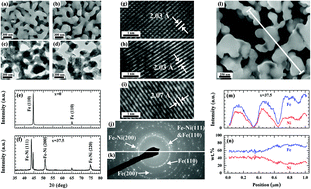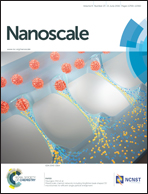A negative working potential supercapacitor electrode consisting of a continuous nanoporous Fe–Ni network†
Abstract
A new class of electrochemical electrodes operating in a negative voltage window has been developed by sintering chemically prepared Fe–Ni nanoparticles into a porous nanoscale mixture of an Fe-rich BCC Fe(Ni) phase and a Ni-rich FCC Fe–Ni phase. The selective conversion of the Fe-rich phase to hydroxides provides the electrochemically active component of the electrodes while the Ni-rich phase provides high conductivity and structural stability. The compositionally optimized electrodes exhibit a specific capacitance in excess of 350 F g−1 (all normalizations are to the total electrode mass rather than the much smaller electrochemically active mass) and retain more than 85% of their maximum specific capacitance after 2000 charging/discharging cycles. In addition to their inexpensive constituents, these electrodes are self-supporting and their thickness and mass loading density of about 65 μm and 20 mg cm−2 are compatible with the established manufacturing processes. This desirable combination of physical and electrochemical properties suggests that these electrodes may be useful as the negative electrode in high performance asymmetric supercapacitors.


 Please wait while we load your content...
Please wait while we load your content...